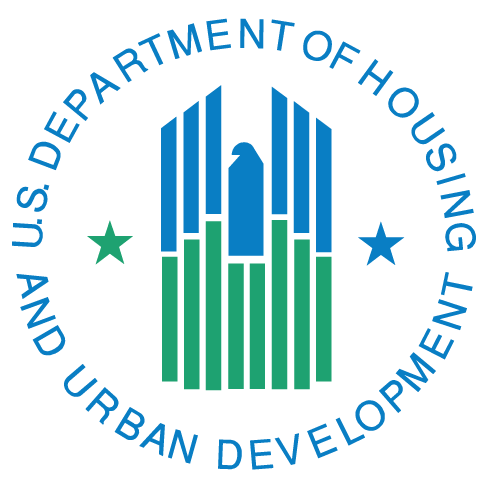 HUD’s Office of Policy Development and Research issued an interim evaluation of the Rental Assistance Demonstration Program (RAD). Because the demonstration is still in its early stages, the evaluation focused on the reasons public housing agencies (PHAs) chose certain public housing projects to convert to Section 8 Project-Based Vouchers (PBV) or Project-Based Rental Assistance (PBRA). The study found that projects chosen for RAD conversion were more likely to have higher per-unit operating subsidies and lower per-unit expenses, and were not necessarily those with the greatest needs for capital improvements.
HUD’s Office of Policy Development and Research issued an interim evaluation of the Rental Assistance Demonstration Program (RAD). Because the demonstration is still in its early stages, the evaluation focused on the reasons public housing agencies (PHAs) chose certain public housing projects to convert to Section 8 Project-Based Vouchers (PBV) or Project-Based Rental Assistance (PBRA). The study found that projects chosen for RAD conversion were more likely to have higher per-unit operating subsidies and lower per-unit expenses, and were not necessarily those with the greatest needs for capital improvements.
As part of the FY12 HUD appropriations act, Congress authorized RAD to help preserve and improve public housing. RAD allows PHAs to leverage Section 8 rental assistance contracts in order to raise private debt and equity for capital improvements for 185,000 public housing units.
The evaluation was conducted by Econometrica, the Urban Institute, and EMG Corporation. The team spoke with 100 staff members from dozens of PHAs.
The evaluation did not consider any issues pertaining to residents. Since the beginning of RAD, resident leaders and advocates have complained to HUD that it is extremely difficult to obtain basic information about proposals to convert their homes under RAD. The requirements that PHAs meet with residents twice before applying for RAD have often not been sufficiently substantive for residents to fully understand the ramifications of RAD conversions. Once a RAD conversion is approved by HUD, residents often are not kept informed about the conversion process. The interim evaluation claims that the impact on residents will be covered by the next phase of evaluation and reported in December 2018.
The evaluation found that PHAs are not necessarily proposing their neediest projects for RAD conversion. Instead, they are using RAD to convert projects across their portfolios with a wide range of capital needs, including projects with no capital needs. Many RAD projects for which transactions have closed are conversions to Section 8 that require no rehabilitation or new construction. Of the 185 closed transactions, 34 (18.4%) had no plans to use their financing to fund any rehabilitation or construction. PHAs often choose projects for RAD that lack significant capital needs because they are easier to close. These PHAs said they were interested in converting to Section 8 for the sake of better long-run project management. Some PHAs also said RAD could improve their overall administrative efficiency by putting all housing assets under a single subsidy program.
PHAs said they also considered the potential financing challenges when choosing a project for RAD, considering financing strategies most likely to be workable. They weighed how much debt a project could carry given its contract rents under Section 8, whether the project needed 4% or 9% Low Income Housing Tax Credit (LIHTC) equity, and the prospects for obtaining LIHTC financing. The evaluation noted that these criteria could result in PHAs rejecting projects with greater capital needs because of the difficulty in meeting financing challenges.
The report states that its most significant finding is that projects chosen for RAD conversion were more likely to have higher per-unit operating subsidies and lower per-unit expenses. Higher subsidies tend to equate to higher Section 8 contract rents, and higher rents and lower expenses would increase net operating income and hence the ability to borrow to make capital improvements.
Compared to non-RAD projects, RAD projects tended to have households with lower median incomes, greater rates of housing cost burden (percentage of income devoted to housing and utility expenses), and higher rates of overcrowding (percentage of households living in housing with more than one person per room). RAD projects also had a greater mix of larger units (as measured by the percentage of one or two-bedroom units), and they tended to be located in neighborhoods in metropolitan areas with lower rates of poverty (percentage of households living below the poverty threshold). The latter feature might have enhanced the ability to secure financing because of the relative stability anticipated by the lower levels of poverty.
PHAs reported appreciating Section 8 over public housing because Section 8 enabled them to use project resources more efficiently by managing their property according to commercial methods, such as building up project reserves to cover future capital needs. Some PHAs also perceived the benefit of simplifying their internal operations by consolidating their assets into a single program, Section 8, which has simpler reporting requirements than public housing. PHAs also liked that Section 8 allowed them to engage in more predictable long-term project planning because the Section 8 subsidy contract offers 15- to 20-year terms with a more reliable revenue stream.
HUD’s Interim Report: Evaluation of HUD’s Rental Assistance Demonstration (RAD) is at: http://bit.ly/2dda7lz
More information about RAD is on page 4-13 of NLIHC’s 2016 Advocates’ Guide, http://bit.ly/22QZiEm, and on NLIHC’s website at: http://bit.ly/1Yfa0E9
